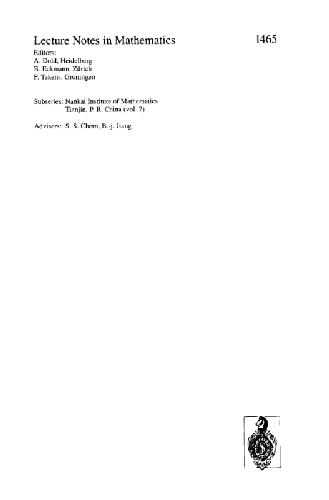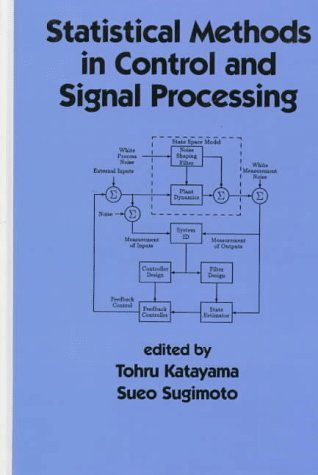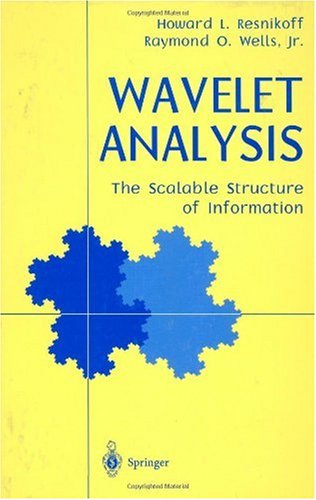Say Song Goh, Say Song Goh, Amos Ron, Zuowei Shen9789812709073, 981270907X
Table of contents :
CONTENTS……Page 6
Foreword……Page 8
Preface……Page 10
A Guided Tour from Linear Algebra to the Foundations of Gabor Analysis Hans G. Feichtinger, Franz Luef and Tobias Werther……Page 14
1. Introduction……Page 15
2. Basics in Linear Algebra……Page 17
3. Finite Dimensional Gabor Analysis……Page 21
4. Frames and Riesz Bases……Page 27
5. Gabor Analysis on L2……Page 31
6. Time-Frequency Representations……Page 35
7. The Gelfand Triple……Page 38
8. The Spreading Function……Page 47
9. Conclusion and Outlook……Page 58
References……Page 60
1. Introduction……Page 63
2. Overview……Page 64
3. Basic Tools……Page 67
4. Analysis of Recursion I to Approximate gt……Page 71
5.1. Iterations for gt……Page 73
5.2. Iterations for gd……Page 75
6. Analysis of Recursion II to Approximate gt……Page 78
7. Analysis of Recursion IV to Approximate gd……Page 82
8. Summary of Results for Iterations III and V……Page 83
Acknowledgments……Page 86
References……Page 87
1. Introduction……Page 89
2. Operator Algebras of Time-Frequency Shifts……Page 93
3. Noncommutative Tori and Feichtinger’s Algebra……Page 96
4. Feichtinger’s Algebra as Bimodule for C ( ) and C ( 0)……Page 106
5. Application to Gabor Analysis: Biorthogonality Relation of Wexler-Raz……Page 111
6. Conclusions……Page 115
References……Page 116
1. Introduction……Page 119
1.1. Index of terminology in mathematics and in engineering……Page 120
1.2. Motivation……Page 135
1.2.1. Some points of history……Page 141
1.2.2. Some early applications……Page 144
2. Signal Processing……Page 145
2.1. Filters in communications engineering……Page 148
2.2. Algorithms for signals and for wavelets……Page 149
2.2.2. Subdivision algorithms……Page 154
2.2.3. Wavelet packet algorithms……Page 156
2.2.4. Lifting algorithms: Sweldens and more……Page 157
2.3. Factorization theorems for matrix functions……Page 158
2.3.1. The case of polynomial functions [the polyphase matrix, joint work with Ola Bratteli]……Page 160
2.3.2. General results in mathematics on matrix functions……Page 162
2.3.3. Connection between matrix functions and wavelets……Page 164
2.3.3.1. Multiresolution wavelets……Page 165
2.3.3.2. Generalized multiresolutions [joint work with L. Baggett, K. Merrill, and J. Packer]……Page 166
2.3.4. Matrix completion……Page 168
2.3.5. Connections between matrix functions and signal processing……Page 170
Acknowledgments……Page 172
References……Page 173
1. Introduction……Page 179
1.2. Some background……Page 180
1.2.2. Some basic terminology……Page 182
2.1.1. Dyadic wavelets……Page 184
2.1.3. Non-dyadic wavelets in one dimension……Page 185
2.2.2. The non-expansive dilation case……Page 186
2.3.2. Group systems……Page 187
2.4.1. The local commutant of the system UD;T……Page 188
2.4.2. The local commutant of an abstract unitary system……Page 189
2.4.3. Operator-theoretic interpolation……Page 190
2.4.4. Normalizing the commutant……Page 191
2.4.5. An elementary interpolation result……Page 192
2.4.7. A test for interpolation pairs……Page 193
2.5.1. The Fourier transform……Page 195
2.5.2. The commutant of (D, T)……Page 196
2.5.3. Wavelets of computationally elementary form……Page 197
2.5.4. De nition of wavelet set……Page 199
2.5.6. Translation and dilation congruence……Page 200
2.6. Phases……Page 202
2.6.1. Some examples of one-dimensional wavelet sets……Page 203
2.7.1. The interpolation map……Page 206
2.7.2. An algorithm for the interpolation unitary……Page 207
2.8. The interpolation unitary normalizes the commutant……Page 208
2.8.2. The coe cient criterion……Page 209
2.10. Journe family interpolation pairs……Page 210
3. Unitary Systems and Frames……Page 211
3.1. Basics on frames……Page 212
3.3. Complements of frames……Page 213
3.4. Super-frames, super-wavelets, and multiplexing……Page 215
3.5. Frame vectors for unitary systems……Page 216
3.7. Group representations……Page 217
4. Decompositions of Operators and Operator-Valued Frames……Page 218
4.1. Ellipsoidal frames……Page 219
4.2. A problem in operator theory……Page 221
References……Page 223







Reviews
There are no reviews yet.